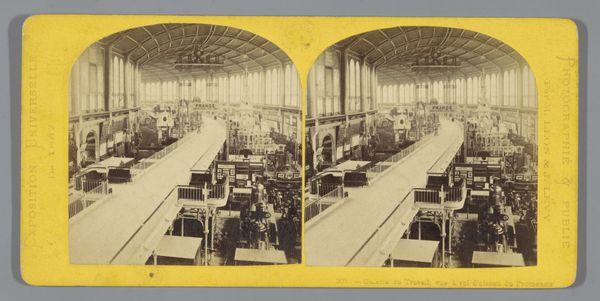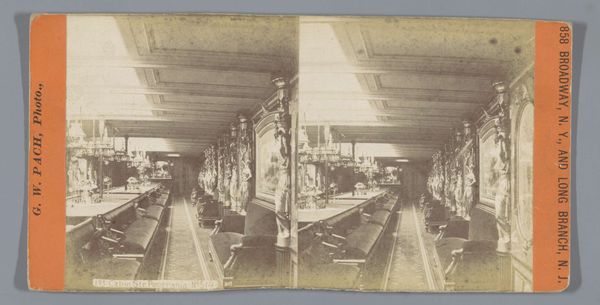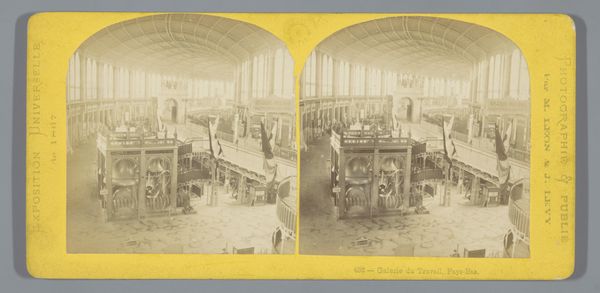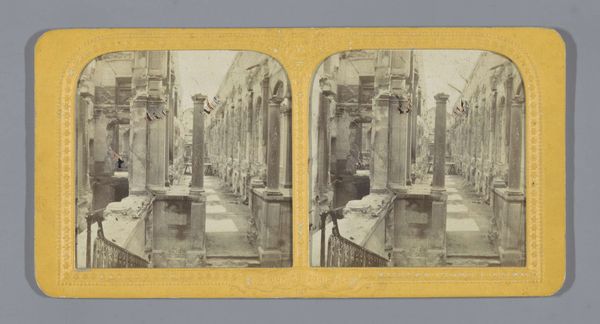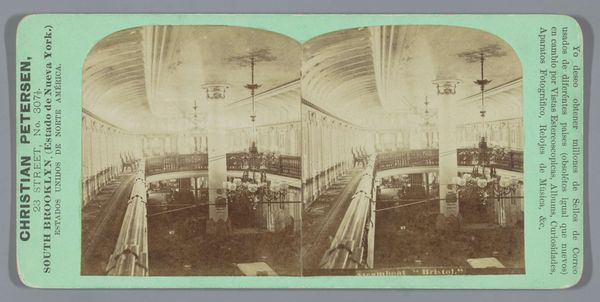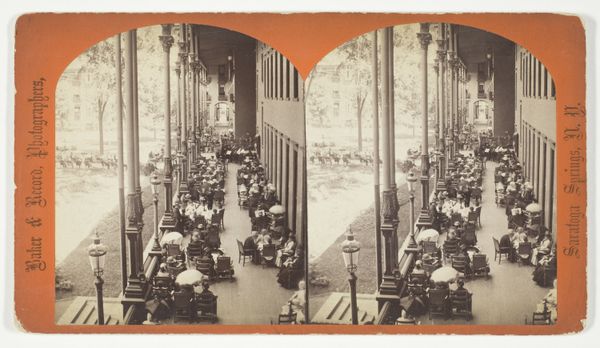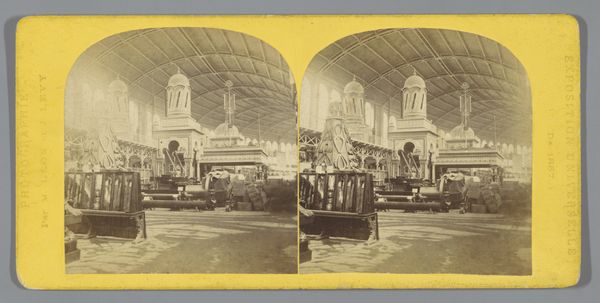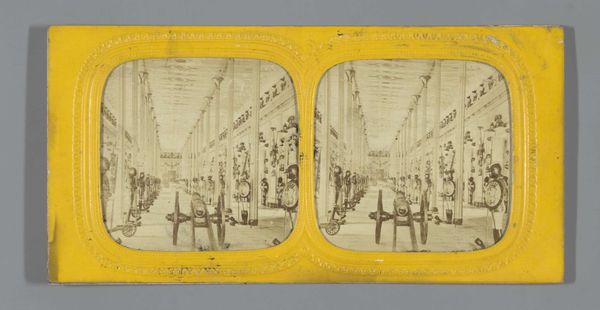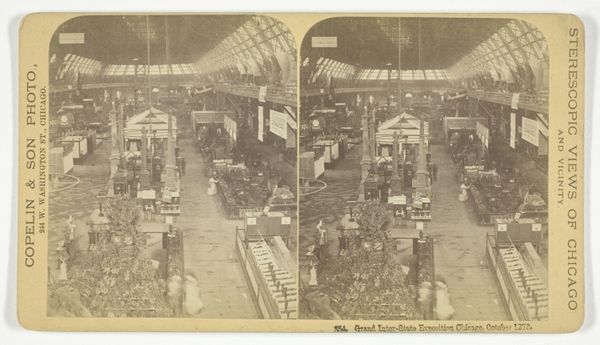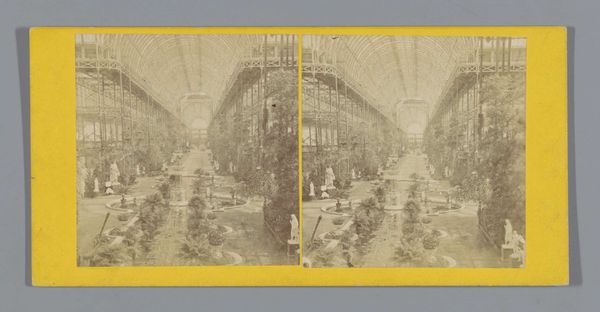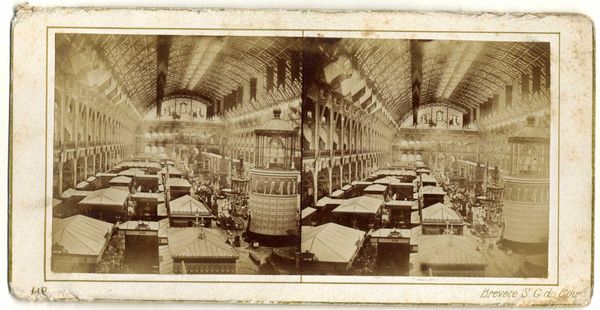
print, photography
# print
#
photography
#
history-painting
#
realism
Dimensions: height 83 mm, width 171 mm
Copyright: Rijks Museum: Open Domain
Editor: This stereo card depicts the Danish section in the machinery hall at the 1867 World's Fair, captured through photography and print by Léon & Lévy. It feels incredibly dense, almost claustrophobic, with the machinery packed so tightly. How do you interpret this image in terms of its visual components? Curator: The photograph presents a fascinating study in repetition and industrial form. Note the stark linearity enforced by the machinery's placement, creating receding lines which emphasize depth and volume. This repetition almost renders the individual machines less distinct, focusing the viewer's attention on the hall as a structured unit. Editor: It does flatten the machines out; is there significance in how the light interacts with them? Curator: Precisely. The light, diffused and even, negates stark contrasts, further reducing the individuality of the forms. The light normalizes the diverse machinery through the absence of deep shadows, contributing to an interpretation that privileges order over the chaos that such industrialization might produce. Editor: So, it’s not about the unique invention but about the structure holding them all together? Curator: In essence, yes. The photographers manipulate perspective, light, and density to compose a scene that champions order and perhaps even the homogenizing effect of industry itself. What’s your perspective? Editor: I see your points. I initially felt overwhelmed by the detail, but understanding the intent behind the composition changes how I view it. Thanks! Curator: Indeed. Art often demands a structural analysis before personal expression emerges. It reveals so much when form informs our feelings, doesn’t it?
Comments
No comments
Be the first to comment and join the conversation on the ultimate creative platform.

